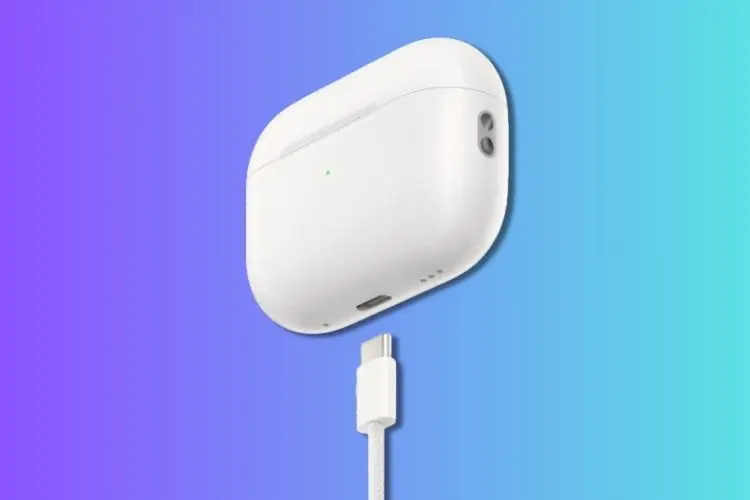The tech world witnessed a significant shift in India as Apple introduced a new chapter for its popular AirPods Pro 2. Ditching the familiar Lightning port, the Cupertino giant unveiled a USB-C charging case, marking a major departure from its proprietary cable ecosystem. This move has sparked excitement and debate in equal measure, leaving many to ponder the implications for both Apple and its Indian consumers.
Why the USB-C Switch?
Apple’s decision to embrace USB-C in India stems from a confluence of factors. Firstly, the Indian government’s push for a standardized charging port has gained momentum, aiming to reduce electronic waste and simplify charging solutions for consumers. Secondly, the global tech landscape has increasingly embraced USB-C as the de facto standard for charging, offering faster speeds and wider compatibility. By adopting USB-C, Apple caters to this trend and potentially avoids potential regulatory hurdles in India.
Apple Ditches Lightning! AirPods Pro 2 Embrace the Forbidden Port (You Won’t Believe Why!
Benefits for Indian Users:
The USB-C upgrade brings several advantages for Indian users. Firstly, it simplifies charging as most smartphones, laptops, and power banks in India now use the same cable. This eliminates the need to carry multiple cables, reducing clutter and frustration. Secondly, USB-C offers faster charging speeds compared to Lightning, leading to quicker top-ups for your AirPods Pro 2. Additionally, the wider availability of USB-C cables translates to greater affordability and accessibility for repairs or replacements.
Charge Freedom! AirPods Pro 2 Ditch Lightning, Embrace Convenience
Impact on Apple’s Ecosystem:
While the USB-C switch benefits users, it also marks a shift in Apple’s long-held strategy of maintaining a closed ecosystem. The Lightning port was a key differentiator for Apple devices, fostering brand loyalty and generating revenue through proprietary accessories. However, the Indian market’s unique regulatory landscape and the global trend towards USB-C necessitated this adaptation. This move could potentially pave the way for wider USB-C adoption across Apple’s product line in the future.
Finally! One Cable for ALL Your Gadgets (Thanks, AirPods Pro 2!)
Potential Challenges and Drawbacks:
Despite the advantages, some potential drawbacks come with the USB-C transition. Firstly, existing AirPods Pro users with Lightning accessories might need to invest in new cables or adapters, adding to their costs. Secondly, the specific implementation of USB-C by Apple could differ from the standard, potentially leading to compatibility issues with some third-party chargers. Finally, Apple’s premium pricing for accessories might extend to USB-C cables, making them a less budget-friendly option compared to readily available alternatives.
Lightning Struck! Apple Surrenders to the USB-C Uprising (Is Your iPhone Next?)
Looking Ahead: A New Era of Connectivity
Apple’s decision to embrace USB-C in India marks a significant step towards a more unified and convenient charging experience. While challenges exist, the overall benefits for users and the tech ecosystem as a whole are undeniable. As India continues to be a crucial market for Apple, this move signals a potential shift towards greater compatibility and interoperability, paving the way for a future where devices seamlessly connect and charge, regardless of the brand or origin.
Further Discussion Points:
- Do you think Apple will adopt USB-C across its entire product line in the future?
- What are the potential long-term implications of this move for Apple’s brand strategy and revenue generation?
How can Apple ensure a smooth transition for existing users who have invested in Lightning accessories?
Will the Indian government’s push for standardized charging inspire similar initiatives in other countries?
By sparking these conversations and considerations, the USB-C upgrade for AirPods Pro 2 in India transcends a mere technological shift. It represents a step towards a more connected and convenient future where technology seamlessly integrates with our lives, regardless of the cables we carry.
